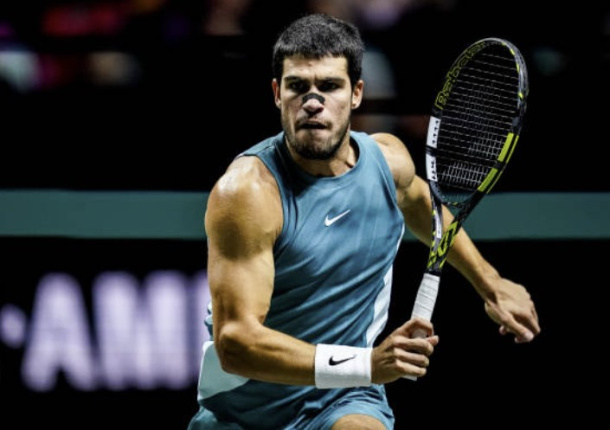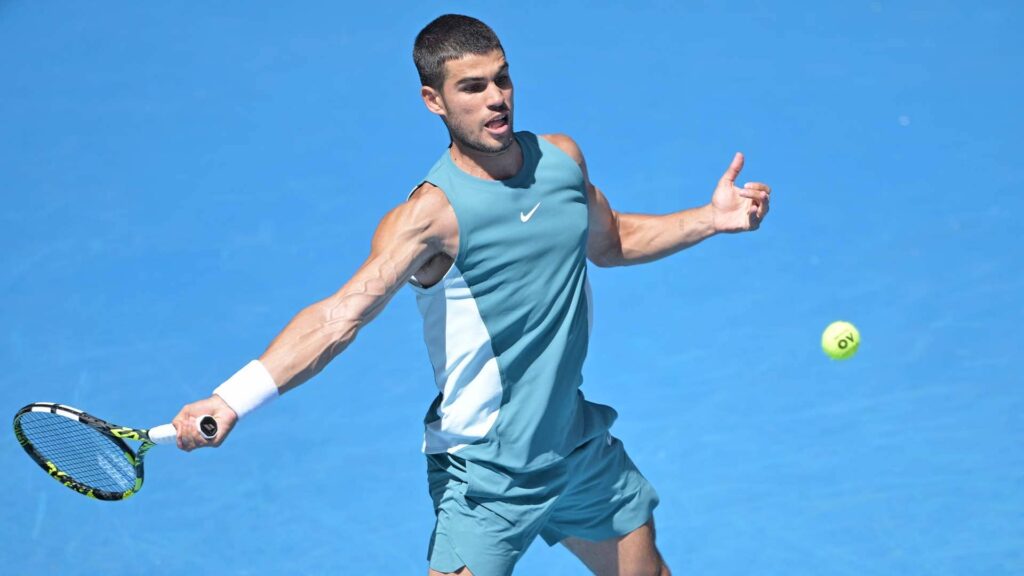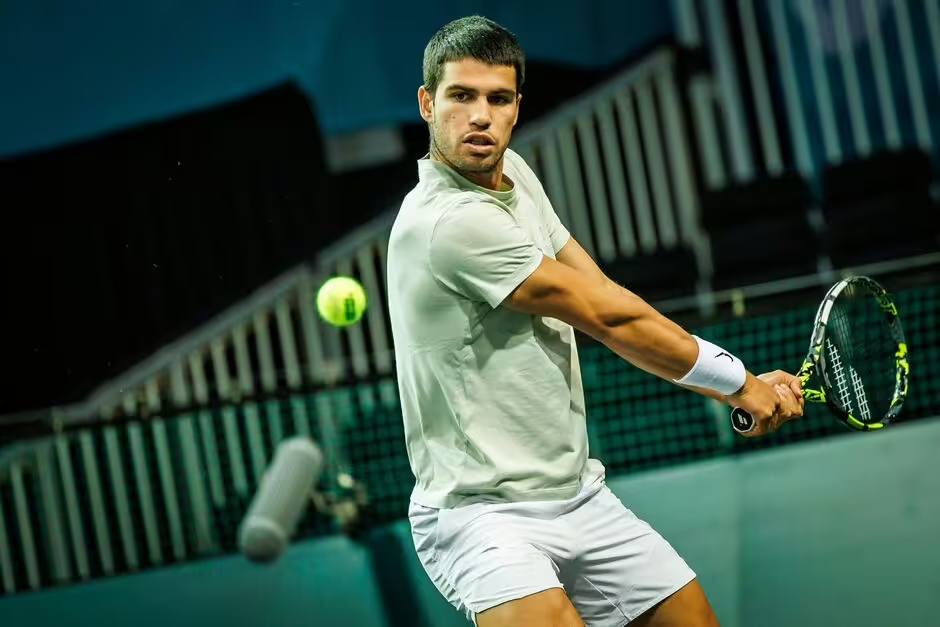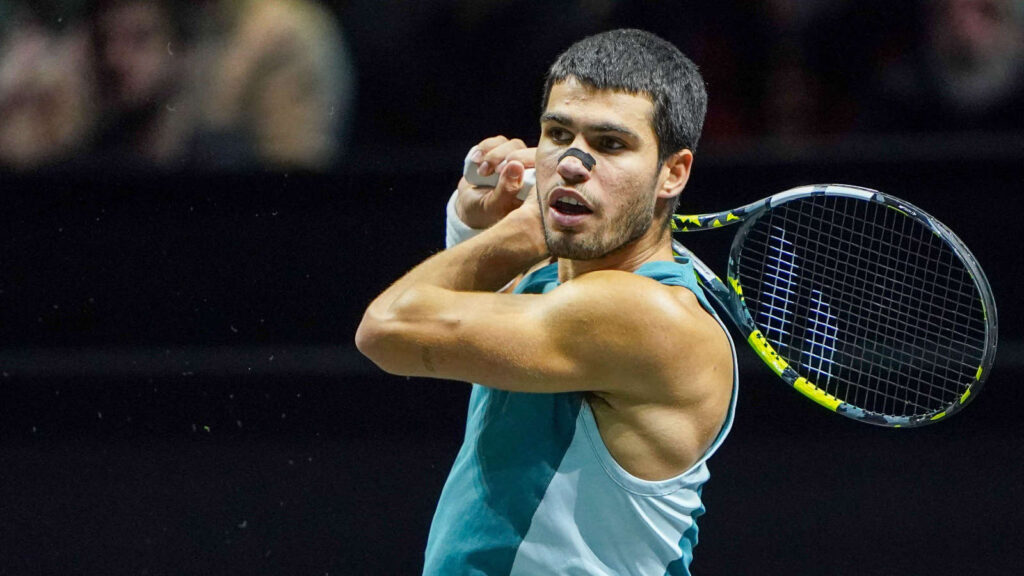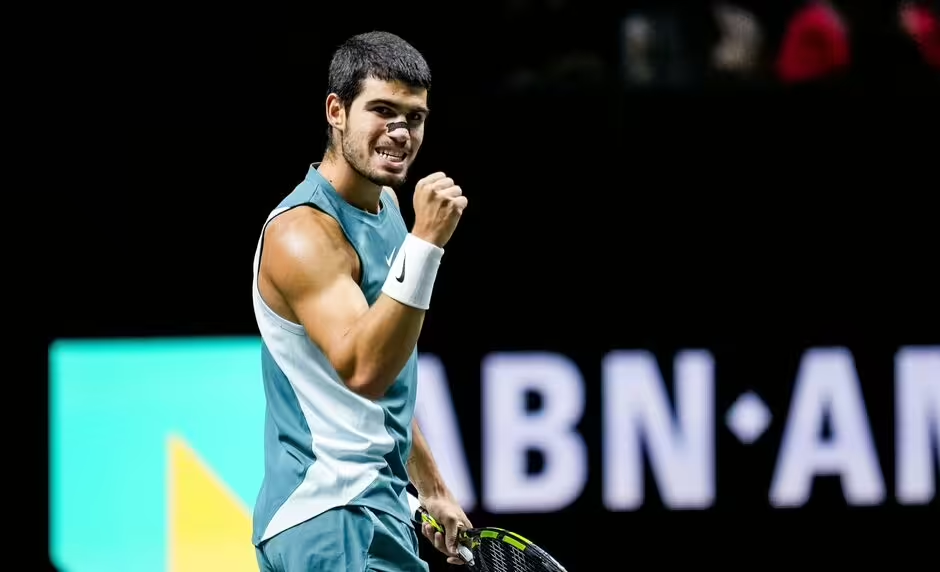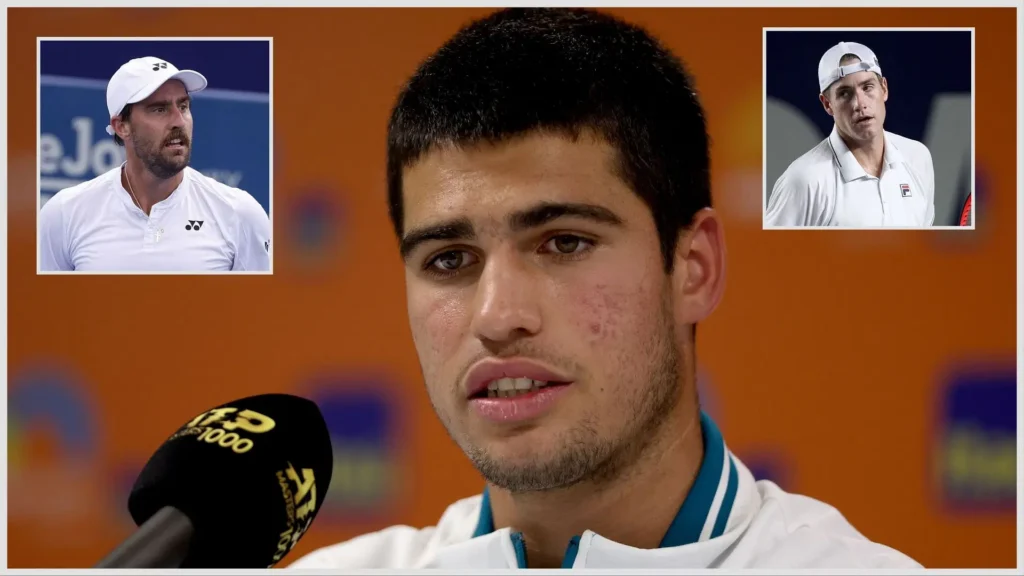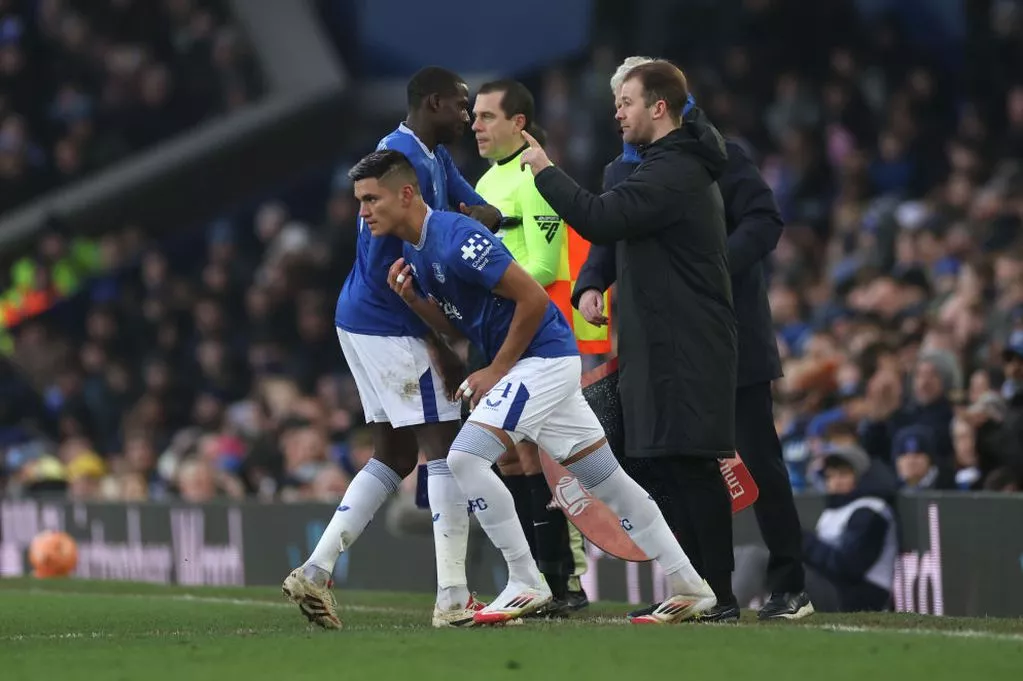Carlos Alcaraz, one of the most exciting young stars in tennis, has made an intriguing scheduling decision for the 2025 season, opting to compete in the ATP 500 event in Rotterdam rather than the traditional South American clay court swing. This choice has raised eyebrows among fans and analysts, as Alcaraz has previously thrived on clay and found great success on the red dirt in Latin America.
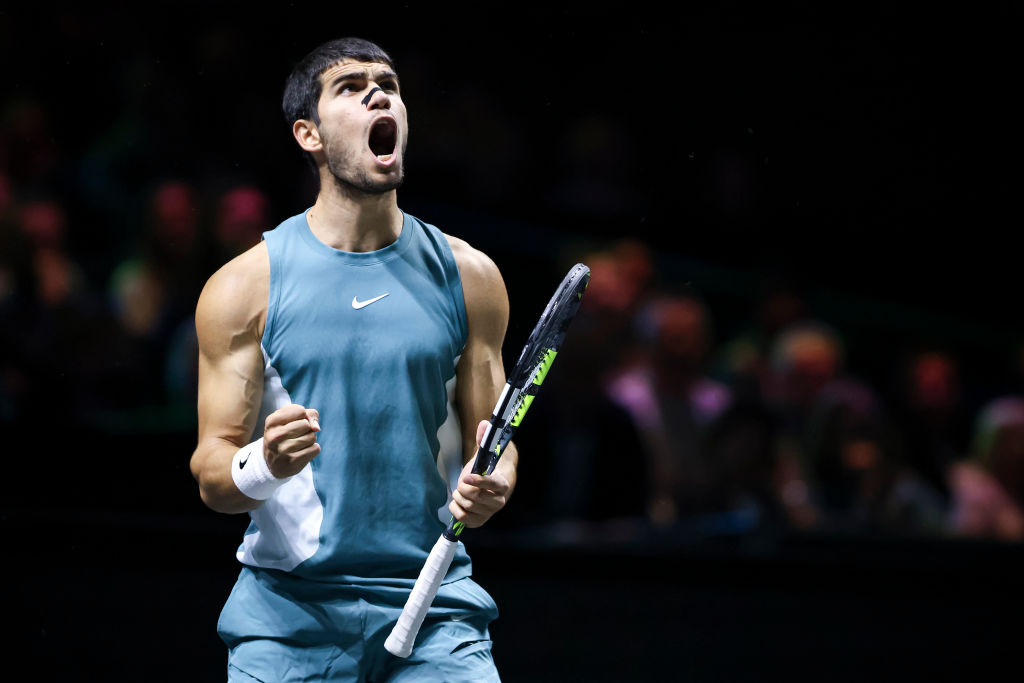
Among those weighing in on the decision is former American tennis pro Steve Johnson, who has a theory about why the Spanish sensation chose the indoor hard courts of Rotterdam over the clay courts of South America. According to Johnson, Alcaraz’s move is part of a bigger strategy to fine-tune his game for the fast-paced, high-stakes tournaments that dominate the ATP calendar later in the year.
A Departure from Tradition
For years, many Spanish and South American players have stuck to a familiar routine after the Australian Open—heading straight to the Golden Swing, a series of ATP tournaments in Argentina, Brazil, and Chile. The logic is simple: these events provide valuable match play on the surface that best suits their games, and they often serve as a confidence booster heading into the European clay court season.
Alcaraz himself has enjoyed success on this swing, winning the Rio Open in 2022 and using these tournaments as stepping stones to bigger clay-court achievements. However, in 2025, he’s shifting gears, choosing to play in the Netherlands instead. So, what’s behind the change?
Steve Johnson’s Theory: Preparing for the Future
Steve Johnson believes Alcaraz’s decision is a calculated one, aimed at making him a more complete player and better preparing him for the biggest hard-court events on the calendar.
“It’s not surprising when you think about it,” Johnson said in a recent interview. “Carlos has already proven himself on clay. He knows he can dominate there. But if he really wants to take that next step and compete for every Grand Slam, he needs to keep improving on faster surfaces. Playing Rotterdam instead of South American clay gives him the chance to fine-tune his game for hard courts, which make up the majority of the season’s biggest events.”
1. Adapting to Faster Courts
One of the key points Johnson highlights is the importance of mastering faster surfaces. Hard courts, especially indoors, play very differently from clay. They reward aggressive play, shorter rallies, and a strong serve—areas where Alcaraz has shown improvement but still has room to grow.
By choosing Rotterdam, Alcaraz is exposing himself to elite competition on a surface that more closely mirrors conditions at big hard-court tournaments like Indian Wells, Miami, and the US Open.
“The ATP calendar is dominated by hard courts,” Johnson pointed out. “If you look at the Grand Slams and Masters 1000 events, most of them are on hard. Carlos knows that if he wants to maximize his chances of winning multiple Slams every year, he has to get as comfortable on hard courts as he is on clay.”
2. Avoiding the Physical Toll of Clay
Another factor Johnson believes played a role in Alcaraz’s decision is the physical demands of clay-court tennis. While Alcaraz is known for his incredible athleticism, clay matches are typically longer and more grueling, requiring extended rallies and a heavy workload on the legs.
By skipping South American clay tournaments early in the year, Alcaraz is likely managing his workload to ensure he remains fresh for the crucial Masters 1000 events in March and the rest of the season.
“Clay is tough on the body,” Johnson said. “You’re sliding, grinding, and playing long matches almost every day. If you’re trying to peak at the right times, you have to be smart with your schedule. Rotterdam is a great way to stay sharp while avoiding unnecessary wear and tear.”
3. Playing Against a Stronger Field
Rotterdam is one of the most competitive ATP 500 events on the calendar, often featuring a stacked field with top-10 players. In contrast, the South American clay tournaments, while prestigious, typically don’t attract as many of the world’s best hard-court players.
For Alcaraz, testing himself against tougher competition in Rotterdam could be a way to push his limits and sharpen his skills against players he’ll likely face in the latter stages of Grand Slams.
“If you want to be the best, you have to play the best,” Johnson noted. “The field in Rotterdam is going to be filled with top guys, and playing against them on a faster court is only going to help Carlos in the long run.”
A Sign of Alcaraz’s Evolution
Alcaraz’s decision to switch things up in 2025 signals his evolution as a player. While he will always be a force on clay, he’s clearly looking to develop a more well-rounded game that allows him to dominate across all surfaces.
We’ve already seen glimpses of this transformation. In 2023, he won Wimbledon, proving he could excel on grass. He’s also had deep runs at hard-court events, including a US Open title in 2022. Now, by prioritizing tournaments like Rotterdam, he’s making a conscious effort to refine his hard-court game even further.
This approach mirrors what legends like Roger Federer, Rafael Nadal, and Novak Djokovic did throughout their careers—strategically adapting their schedules to maximize long-term success. Federer, for example, began playing fewer clay events later in his career to focus on hard and grass courts, while Nadal also adjusted his calendar to prolong his dominance.
What This Means for Alcaraz’s 2025 Season
If Alcaraz’s strategy pays off, we could see him become an even more formidable opponent on all surfaces. By playing more indoor and fast-court events early in the year, he could gain confidence heading into Indian Wells and Miami, where he has already shown he can thrive.
It also means that when the clay season does arrive, he’ll be fresher and ready to dominate in Monte Carlo, Madrid, and Roland Garros. Instead of burning himself out in February, he’s pacing himself for the long haul.
Steve Johnson’s theory makes a lot of sense—Alcaraz’s decision is not about abandoning his clay-court roots, but about ensuring that he’s the best version of himself on every surface.
As fans, we’ll be watching closely to see how this new approach impacts his season. One thing is for sure: Carlos Alcaraz is thinking long-term, and if his past performances are any indication, his decision to play Rotterdam over South American clay could be another step toward tennis greatness.
